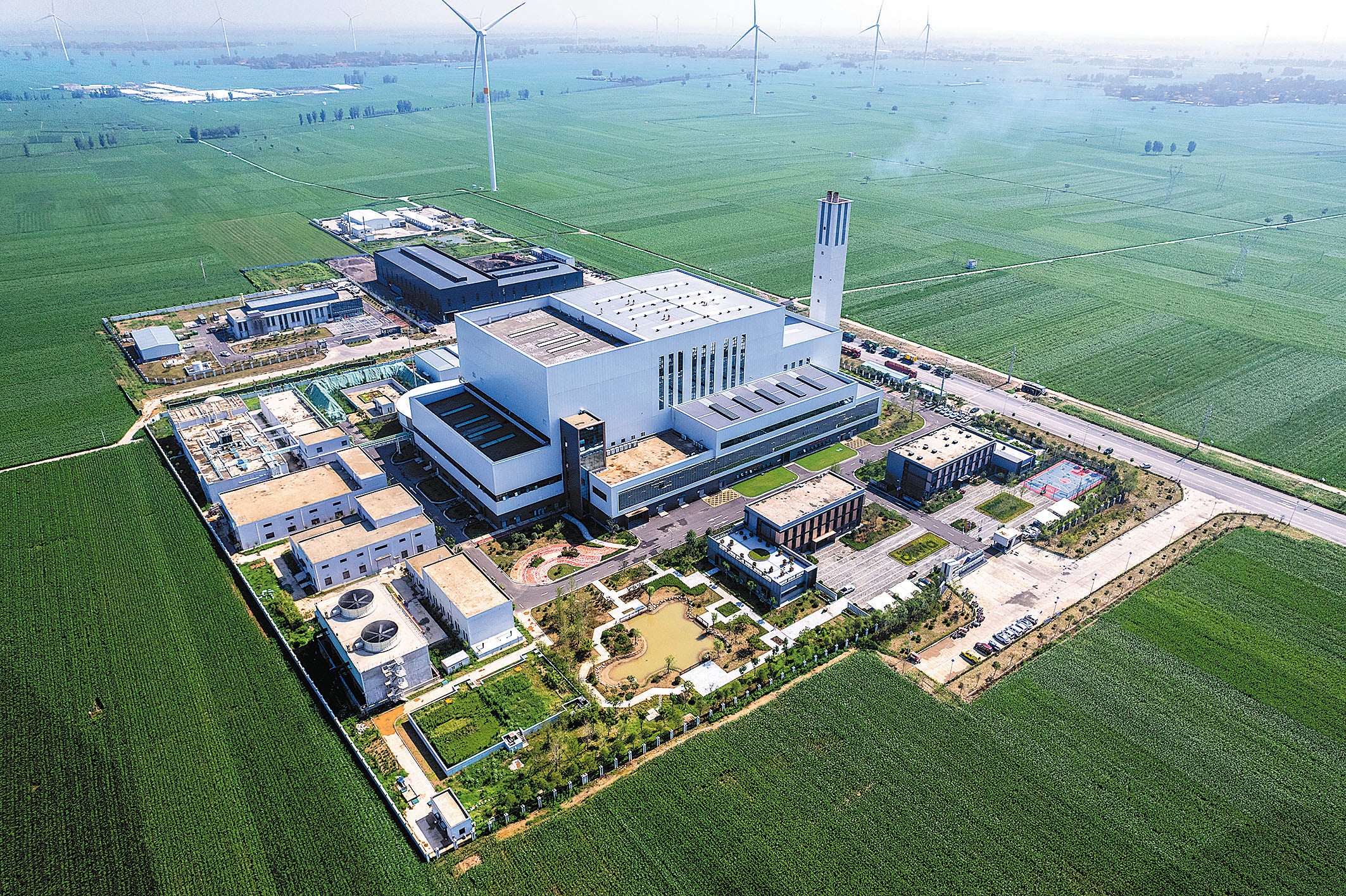How waste-watching tours boost eco-protection
THE ARTICLES ON THESE PAGES ARE PRODUCED BY CHINA DAILY, WHICH TAKES SOLE RESPONSIBILITY FOR THE CONTENTS

“It’s astonishing!” That was the reaction of some members of a 30-strong group of visitors as they looked through a glass wall at a huge pile of domestic waste that was set to be incinerated to generate electricity.
“I thought I only threw away a small amount of waste, and I didn’t expect that it would eventually become part of such a mound,” said Hou Yulai, a kindergarten teacher from Cuigezhuang township in Beijing’s Chaoyang district, as three large mechanical claws busily added more waste to the pile.
The machines work around the clock. Every time they move, each one grabs about eight tons of waste, enough to fill a regular truck.
Welcome to the Clean Incineration Centre in Chaoyang, where more than 1,700 tons of waste are incinerated every day to generate electricity.
As China strives to encourage even greater public participation in environmental governance, the facility is just one of more than 2,000 that have been opened to the public nationwide.
The “Opening Environmental Protection Facilities to the Public” mechanism was launched in May 2017, when the Ministry of Ecology and Environment and the Ministry of Housing and Urban-Rural Development issued a guideline that ordered prefecture-level cities to open one of each type of four environmental facilities by the end of 2020: those for environmental monitoring; sewage treatment; domestic waste disposal; and the disposal of hazardous waste and abandoned home appliances.
All members of the group Hou joined came from Chaoyang’s Dongzhou community. The local neighbourhood committee organised the trip.
Currently, 2,101 environmental protection facilities nationwide are open to the public, said Dong Wenxuan, head of the division of general affairs at the Ministry of Ecology and Environment’s department of communications and education.
By the end of last year, 175 million people had either visited environmental facilities in person or taken virtual tours of establishments.
She noted that domestic waste disposal plants are among the most popular sites.
At present, 304 waste-to-energy power plants across the country are open to the public, and some have even become popular destinations for exercise and leisure, she said, citing the Changzhou waste-to-energy project in Jiangsu province, as an example. Built near urban residential communities, it is an unfenced, open, community-friendly site, she said.
In addition to opening its waste-to-energy facility regularly, the plant allows residents of nearby communities free access to its outdoor fitness equipment, children’s playground, basketball court and garden.
Like the Clean Incineration Centre in Chaoyang, the Lujiashan Circular Economy (Venous Industry) Base, also in Beijing, is home to a waste-to-energy power plant and a kitchen waste disposal facility. It is also a popular tourist attraction.
According to Shougang Environment Industry, the company that runs the base, from 2014 to 2019, the base received 34,500 visitors in about 1,200 batches.
The company said that local residents make up the largest visitor group now, accounting for more than 70 per cent of the total visitors the base has received.
“The major visitor groups are changing from environmental-sector employees and students from middle and primary schools to community residents, and there has been a rapid rise in the number of local visitors,” Shougang Environment said.
The changes have happened thanks to greater awareness of environmental protection and people’s growing enthusiasm for participating in the work, the company said.
Hou, the kindergarten teacher, said she heard from an employee at the Clean Incineration Centre in Chaoyang that if garbage is not properly sorted it will influence the heating power of the waste and thus negatively affect the facility’s power-generation performance.
She said she plans to tell the children in her kindergarten what the classified garbage will be used for, thus encouraging them to sort their waste better.
Subscribe to Independent Premium to bookmark this article
Want to bookmark your favourite articles and stories to read or reference later? Start your Independent Premium subscription today.